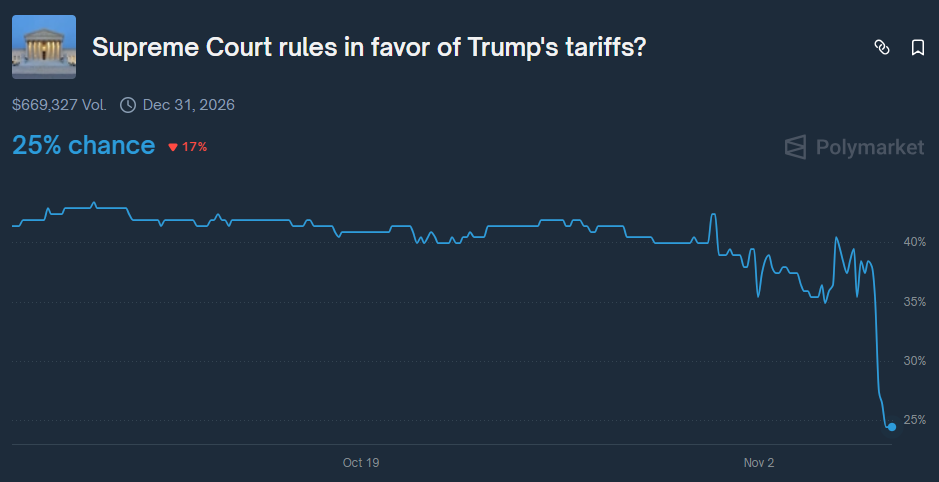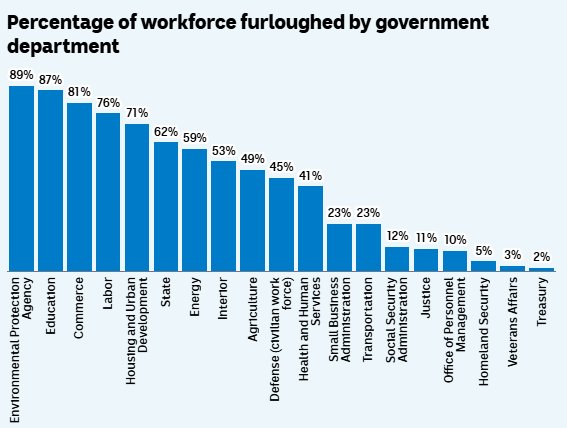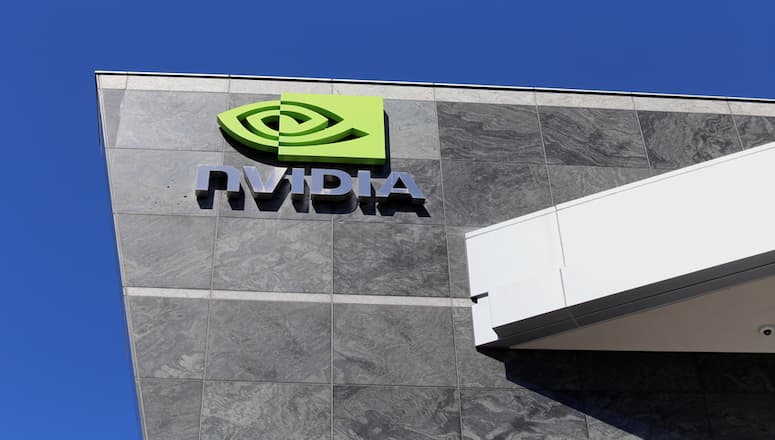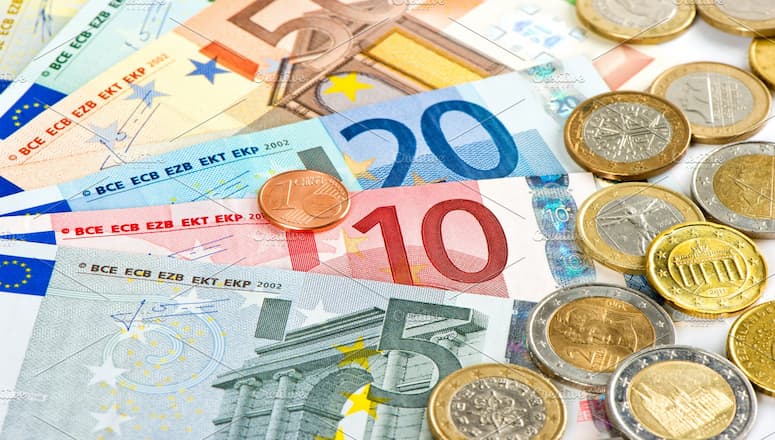ข่าวสารตลาด & มุมมองเชิงลึก
ก้าวนำตลาดด้วยมุมมองเชิงลึกจากผู้เชี่ยวชาญ ข่าวสาร และการวิเคราะห์ทางเทคนิค เพื่อเป็นแนวทางในการตัดสินใจซื้อขายของคุณ.

Artificial intelligence stocks have begun to waver slightly, experiencing a selloff period in the first week of this month. The Nasdaq has fallen approximately 2%, wiping out around $500 billion in market value from top technology companies.

Palantir Technologies dropped nearly 8% despite beating Wall Street estimates and issuing strong guidance, highlighting growing investor concerns about stretched valuations in the AI sector.
Nvidia shares also fell roughly 4%, while the broader selloff extended to Asian markets, which experienced some of their sharpest declines since April.
Wall Street executives, including Morgan Stanley CEO Ted Pick and Goldman Sachs CEO David Solomon, warned of potential 10-20% drawdowns in equity markets over the coming year.
And Michael Burry, famous for predicting the 2008 housing crisis, recently revealed his $1.1 billion bet against both Nvidia and Palantir, further pushing the narrative that the AI rally may be overextended.
As we near 2026, the sentiment around AI is seemingly starting to shift, with investors beginning to seek evidence of tangible returns on the massive investments flowing into AI, rather than simply betting on future potential.
However, despite the recent turbulence, many are simply characterising this pullback as "healthy" profit-taking rather than a fundamental reassessment of AI's value.
Supreme Court Raises Doubts About Trump’s Tariffs
The US Supreme Court heard arguments overnight on the legality of President Donald Trump's "liberation day" tariffs, with judges from both sides of the political spectrum expressing scepticism about the presidential authority being claimed.
Trump has relied on a 1970s-era emergency law, the International Emergency Economic Powers Act (IEEPA), to impose sweeping tariffs on goods imported into the US.
At the centre of the case are two core questions: whether the IEEPA authorises these sweeping tariffs, and if so, whether Trump’s implementation is constitutional.
Chief Justice John Roberts and Justice Amy Coney Barrett indicated they may be inclined to strike down or curb the majority of the tariffs, while Justice Brett Kavanaugh questioned why no president before Trump had used this authority.
Prediction markets saw the probability of the court upholding the tariffs drop from 40% to 25% after the hearing.

The US government has collected $151 billion from customs duties in the second half of 2025 alone, a nearly 300% increase over the same period in 2024.
Should the court rule against the tariffs, potential refunds could reach approximately $100 billion.
The court has not indicated a date on which it will issue its final ruling, though the Trump administration has requested an expedited decision.
Shutdown Becomes Longest in US History
The US government shutdown entered its 36th day today, officially becoming the longest in history. It surpasses the previous 35-day record set during Trump's first term from December 2018 to January 2019.
The Senate has failed 14 times to advance spending legislation, falling short of the 60-vote supermajority by five votes in the most recent vote.
So far, approximately 670,000 federal employees have been furloughed, and 730,000 are currently working without pay. Over 1.3 million active-duty military personnel and 750,000 National Guard and reserve personnel are also working unpaid.

SNAP food stamp benefits ran out of funding on November 1 — something 42 million Americans rely on weekly. However, the Trump administration has committed to partial payments to subsidise the benefits, though delivery could take several weeks.
Flight disruptions have affected 3.2 million passengers, with staffing shortages hitting more than half of the nation's 30 major airports. Nearly 80% of New York's air traffic controllers are absent.
From a market perspective, each week of shutdown reduces GDP by approximately 0.1%. The Congressional Budget Office estimates the total cost of the shutdown will be between $7 billion and $14 billion, with the higher figure assuming an eight-week duration.
Consumer spending could drop by $30 billion if the eight-week duration is reached, according to White House economists, with potential GDP impacts of up to 2 percentage points total.


Alibaba Group Holding Limited (NYSE: BABA, HKEX: 9988) announced the latest financial results on Thursday. The Chinese e-commerce giant reported revenue of $29.124 billion (up by 3% year-over-year), falling slightly short of $29.288 billion expected. Earnings per share topped analyst estimates for the quarter at $1.816 per share (an increase of 15% year-over-year) vs. $1.683 earnings per share estimate. ''We delivered solid results this past quarter despite ongoing macro environment challenges, which is a testament to our resilient business model and unmatched customer value proposition,'' Daniel Zhang, Chairman and CEO of the company said in a press release. ''The uncertainties of the global landscape have only reinforced our resolve to focus on building capacity that will yield sustainable, high-quality growth for our customers and our own business over the long term.
The trust of our shareholders has enabled Alibaba’s development over the past 23 years, and we are committed to improving shareholder return as we continue to strengthen the foundations for Alibaba’s future,'' Zhang added. Alibaba also announced an increase to its share buyback program: ''We have continued to take a holistic approach to improve operating efficiency and cost optimization throughout the company that resulted in adjusted EBITA growth of 29% year-over-year. With strong net cash position and cash flow generation, as of November 16, 2022, we had repurchased approximately US$18 billion of our shares under our existing US$25 billion share repurchase program.
In addition, our board has approved to upsize the share repurchase program by another US$15 billion and extend the program to the end of fiscal year 2025.'' Shares of Alibaba rose on Thursday – up by around 8% at $84.52 a share. Stock performance 1 month: +18.47% 3 month: -5.97% Year-to-date: -28.18% 1 year: -40.58% Alibaba price targets Truist Securities: $125 Barclays: $114 Morgan Stanley: $110 B of A Securities: $155 Bernstein: $130 Benchmark: $205 JP Morgan: $140 HSBC: $141 Citigroup: $172 Alibaba is the 37 th largest company in the world with a market cap of $227.68 billion. You can trade Alibaba Group Holding Limited (NYSE: BABA, HKEX: 9988) and many other stocks from the NYSE, NASDAQ, HKEX, ASX, LSE and DE with GO Markets as a Share CFD.
Sources: Alibaba Group Holding Limited, TradingView, MarketWatch, MetaTrader 5, Benzinga, CompaniesMarketCap


NVIDIA Corporation (NASDAQ: NVDA) reported its latest financial results after the market close in the US on Wednesday. The US technology giant beat revenue estimates but fell short of earnings per share (EPS) expectations for the quarter. The company reported revenue of $5.931 billion (down by 17% year-over-year) vs. $5.781 billion estimate.
EPS reported at $0.58 per share (down by 50% year-over-year) vs. $0.70 per share. ''We are quickly adapting to the macro environment, correcting inventory levels, and paving the way for new products,'' founder and CEO of NVIDIA, Jensen Huang said after posting the latest results. ''NVIDIA’s pioneering work in accelerated computing is more vital than ever. Limited by physics, general purpose computing has slowed to a crawl, just as AI demands more computing. Accelerated computing lets companies achieve orders-of-magnitude increases in productivity while saving money and the environment,'' Huang added.
NVIDIA expects revenue of around $6 billion in Q4. The stock was down by 4.54% on Wednesday at $159.09. The share price rose by around 2% in after-hours following the results.
Stock performance 1 month: +33.32% 3 month: -12.37% Year-to-date: -45.37% 1 year: -45.09% NVIDIA price targets Credit Suisse: $210 Oppenheimer: $225 Barclays: $140 Deutsche Bank: $140 Citigroup: $210 BMO Capital: $210 Mizuho: $205 Stifel: $165 Needham: $170 NVIDIA is the 14 th largest company in the world with a market cap of $400.98 billion. You can trade NVIDIA Corporation (NASDAQ: NVDA) and many other stocks from the NYSE, NASDAQ, HKEX, ASX, LSE and DE with GO Markets as a Share CFD. Sources: NVIDIA Corporation, TradingView, MarketWatch, MetaTrader 5, Benzinga, CompaniesMarketCap


The EUR has been on a ‘recovery rally’ since it fell below parity level with USD earlier this year. With inflationary pressures potentially easing across the world the USD has finally taken a breath. The currency which has been haven for many market participants in dealing with the high volatility finally saw a dip after weaker than expected US CPI figures last week.
Since this time the USD Index or DXY has fallen by nearly 4.5% which is a significant drop. This has had an overall positive impact on currencies that were struggling such as the AUD, JPY and of course the EUR. Whilst the EUR has provided a positive move in recent weeks and days there is still some geopolitical concerns especially with the news of a missile killing two citizens in Poland earlier this week.
Technical Analysis The weekly chart shows that price is currently testing a long terms resistance level at 1.0352. This level acted as support for almost 7 years prior to being broken and therefore has become a significant level. In addition, the price is also fighting against the 50-week moving average which is at 1.0588.
The 50 week moving averages is also a short-term long target for long trades. Looking more closely at the daily chart, the price is showing an important signal that it has not done since May 2020. The price is testing the 200-day moving average.
If it can break through it may represent a bullish signal. The last time the price broke through this level it managed to go from 1.10 to 1.23. This time around, the currency pair is having to fight inflationary pressures which may create a headwind.
The price action is still showing a potential price target of 1.06 in the near term and if it can break through the 200-day moving average and a longer-term target of 1.15.


Walmart Inc. (NYSE: WMT) announced its latest financial results before the market open in the US on Tuesday. World’s largest supermarket chain reported total revenue of $152.8 billion for the quarter (up by 8.7% year-over-year) vs. $147.668 billion expected. Earnings per share reported at $1.50 per share (up by 3.4% year-over-year) vs. $1.321 per share estimate. ''We had a good quarter with strong top-line growth globally led by Walmart and Sam’s Club U.S., along with Flipkart and Walmex.
Walmart U.S. continued to gain market share in grocery, helped by unit growth in our food business. We significantly improved our inventory position in Q3, and we’ll continue to make progress as we end the year. From The Big Billion Days in India, through our Deals for Days events in the U.S. and a Thanksgiving meal that will cost the same as last year, we’re here to help make this an affordable and special time for families around the world.
We have an amazing group of associates that make all this happen, and I want to say thank you,'' President and CEO of Walmart, Doug McMillon said in a press release. Walmart raised its full-year outlook after its strong Q3 results and announced a $20 billion share buyback program. Shares of Walmart were up by 6.54% on Tuesday at $147.14 a share.
Stock performance 1 month: +10.69% 3 month: +54% Year-to-date: +62% 1 year: +71% Walmart price targets Jefferies: $165 Keybanc: $155 Morgan Stanley: $150 DA Davidson: $163 Cowen & Co.: $165 Stifel: $149 Oppenheimer: $155 Credit Suisse: $145 Deutsche Bank: $162 Citigroup: $162 Walmart is the 14 th largest company in the world with a market cap of $402.87 billion. You can trade Walmart Inc. (NYSE: WMT) and many other stocks from the NYSE, NASDAQ, HKEX, ASX, LSE and DE with GO Markets as a Share CFD. Sources: Walmart Inc., TradingView, MetaTrader 5, Benzinga, CompaniesMarketCap


Bitcoin has seen its price plummet after a volatile week largely due to the collapse of Cryptocurrency exchange, FTX. The price of the Bitcoin has fallen to levels not seen since November 2020. The price is now showing signs that it may be in a short-term consolidation before it may sell off again.
The downward move may be amplified, especially if it is supported by a news catalyst such as another cryptocurrency exchange going bust or other institutions become entangled in the FTX situation. After the price of Bitcoin had an initial downward spike in selling where the price broke through the crucial $17,000 support level, the price has been consolidating in a bearish pennant pattern. This pattern is categorised by a tightening of its price range and an overall downward trend in volume.
Although, the volume is not perfectly downward sloping, through the duration of the pennant it has been for the most part decreasing. If the pattern plays out correct, the sellers will soon overpower the buyers and push the price through the bottom part of the pennant signaling the next sell down. If the price can break towards the downside out of the pennant and break through the recent lows, the next major support level is at $13,000 USD and then $10,000 after that.
The trade if it follows through also represents relatively good risk reward of almost 3.5:1. However it is important to remember that Bitcoin has been exceptionally oversold and may struggle to move further down so good risk management is essential. With so much attention around cryptocurrency the elevated volatility may continue in the short-term future.


NIO Inc. (NYSE: NIO) announced Q3 financial results before the market open in the US on Thursday. The Chinese automaker fell short of analyst estimates for the quarter. The company reported revenue of $1.827 billion (up by 26.3% from the same period last year) vs. $1.836 billion estimate.
Loss per share reported at -$0.297 per share vs. analyst estimate of -$0.147 loss per share. ''NIO delivered 31,607 vehicles in the third quarter of 2022, representing a solid growth of 29.3% year-over-year and achieving a record-breaking quarterly delivery. Following the delivery of our new product lineup based on NIO Technology 2.0 catering to different market segments, we have witnessed strong growth momentum in user demand and robust foot traffic, especially after the debut of ET5s in stores from September, and expect the ET5 delivery will support a substantial acceleration of our overall revenue growth in the fourth quarter of 2022. To meet the growing user demand and shorten the waiting time, we have been working closely with supply chain partners to accelerate production and delivery,'' William Bin Li, founder, chairman and CEO of NIO said in a press release after the latest numbers were announced.
NIO expects revenues of between $2.442 billion and $2.703 billion in Q4, which would be an increase of between 75.4% to 94.2% from the same period last year. Shares of NIO were up by over 10% on Thursday, despite missing Q3 estimates as the company looks to accelerate production and delivery to meet growing demand in Q4. Stock performance 1 month: -18.74% 3 month: -50.12% Year-to-date: -67.22% 1 year: -75.39% NIO price targets Morgan Stanley: $31 HSBC: $28 Goldman Sachs: $56 Barclays: $34 Mizuho: $42 Citigroup: $31.3 B of A Securities: $26 UBS: $32 Barclays: $19 Deutsche Bank: $20 NIO is the 23 rd largest automaker in the world with a market cap of $17.71 billion.
You can trade NIO Inc. (NYSE: NIO) and many other stocks from the NYSE, NASDAQ, HKEX, ASX, LSE and DE with GO Markets as a Share CFD. Sources: NIO Inc., TradingView, MetaTrader 5, Benzinga, CompaniesMarketCap

